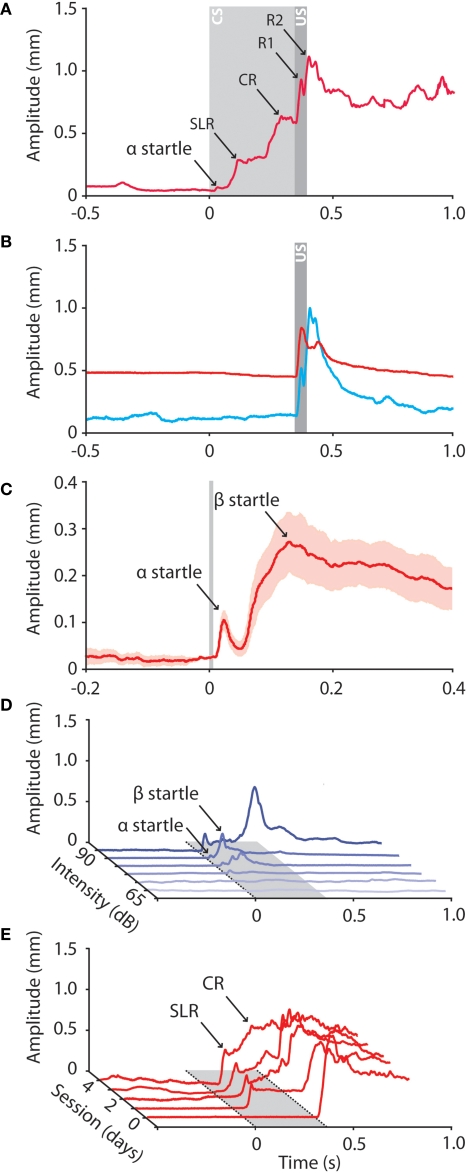Figure 2.
Raw data traces obtained from mice during eyeblink conditioning and auditory startle reflexes. (A) Different peaks can be distinguished in the conditioned eyeblink trace, including a small startle peak, a short-latency response (SLR), a conditioned response (CR), and two or more unconditioned response peaks (R1 and R2). In all panels: tone onset at t = 0; puff onset at t = 350; CS duration 380 ms; US duration 30 ms; ISI 350 ms; at amplitude = 0 mm the eyelid is maximum opened, at 1 mm the eyelid is fully closed. (B) Raw data traces of a reflexive eyeblink response of a mouse when awake behaving (blue) and during ‘quiet wakefulness’ (red). When behaving the eyelid is fully open and the oscillatory properties of the eyelid motor system are clearly visible in the eyeblink response. During quiet wakefulness the mouse sits very quiet, the eyelid is half closed, the baseline is completely flat, and there is a virtual absence of the normal oscillations of the eyelid response. (C) Mean (±SEM) of 20 raw data traces of eyelid startle reflexes in response to a loud auditory tone (90 dB, 10 kHz). Note that, when presented such a loud tone, two startle peaks (α and β) can be distinguished in the raw data traces. (D) The amplitude of the auditory startle reflex correlates with the intensity of the auditory stimulus. First small α responses emerge, whereas β responses appear when the tone intensity is increased. (E) Example raw data traces of a mouse over the consecutive training sessions. During habituation session (T-0) the behaviorally neutral CS does not elicit eyelid responses. During the first paired training sessions SLRs emerge whereas prolonged training results in well-timed CRs.

